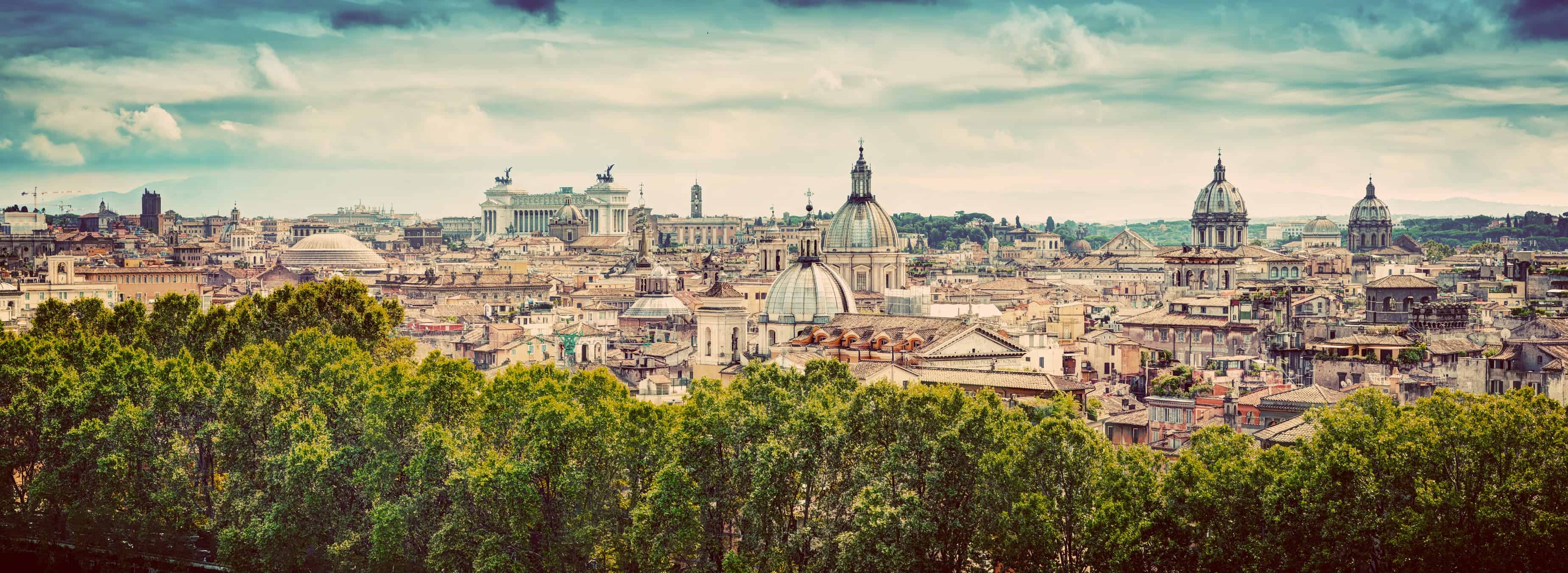Italy has a reputation for being an expensive country to visit and Rome is generally one of the pricier cities. The nice thing about Rome is that with so much history behind it, there are numerous things to do which won’t cost you a dime. Whether you’re in the Eternal City for a day, week or month, you’ll never run out of thrifty ways to fill your time.
Basilica di San Pietro
 Espada Din from flickr.com/photos/espadaking/
Espada Din from flickr.com/photos/espadaking/
Before you even enter the square, marvel at Renaissance architecture designed by the most important names in art history. Did you know it is still one of the biggest churches in the world? St. Peter’s Basilica is the holiest Catholic site, representing Christianity for most of the world. Even travellers with no religious reasons to visit can appreciate the art and history it represents.
Descriptions of what to see inside and outside the building fill guidebooks. Visitors may want to consider paying for a tour if they don’t own one. By tradition, Saint Peter is buried beneath the basilica and his tomb is believed to be directly below the altar. Visiting the necropolis below the building is not free, but it is a fascinating experience and worth the 12 euro charge. Reservations are required months in advance but single travellers are sometimes permitted to join a group.
Fontana di Trevi
 Daryn MOffitt of flickr.com/photos/u12bme/
Daryn MOffitt of flickr.com/photos/u12bme/
A stunning and complex example of Baroque design, the Trevi Fountain was completed in the 1700’s. It's one of the icons of Rome. The fountain depicts Neptune, god of the sea, rising out of the water. The Trevi Fountain sits at the meeting point of three ancient roads (tre vie) and marks the end of one of the modern aqueducts (19 BC) which supplied water to Rome.
 Dark Rome Walking Tours from flickr.com/photos/darkrometours/
Dark Rome Walking Tours from flickr.com/photos/darkrometours/
In 2013 fashion house Fendi sponsored a 2.2 million euro restoration of the Trevi Fountain. Visitors had been disappointed to find the fountain hidden behind scaffolding and the water drained but the result is nothing short of incredible.
No visit would be complete without tossing a coin into the fountain. After all, it assures you will one day return to Rome.
Pantheon
 Sean Molin from flickr.com/photos/seanmolin/
Sean Molin from flickr.com/photos/seanmolin/
Built almost 2,000 years ago, the Pantheon is still an engineering marvel. It’s where you’ll find the world’s largest unreinforced concrete dome and one of the best preserved Roman buildings. The oculus at the centre provides natural light while electricity supplements the daylight.
The building has had a variety of uses including a stint as a Catholic church and a tomb. Legendary painter Raphael is buried here, along with Annibale Carracci and other artisans from the centuries. Several royal tombs are found here as well. If you’re in town on an important Catholic Holy Day you may be lucky enough to attend a special mass held in the building.
Church of San Luigi dei Francesi
 Anders Fagerjord from flickr.com/photos/fagerjord/
Anders Fagerjord from flickr.com/photos/fagerjord/
There are a lot of churches in Italy and it’s easy to get burned out. The reason to visit this one is not because of the lovely architecture, but because there are three amazing pieces by Caravaggio. The Calling of St. Matthew, The Inspiration of Saint Matthew and the Martyrdom of Saint Matthew portray the life of the Saint. The exterior facade was designed by Giacomo della Porta depicting French history and artists’ works are represented inside.
Trastevere
 Fabio from flickr.com/photos/bio84/
Fabio from flickr.com/photos/bio84/
Escape the crowds and take a stroll through Trastevere to find authentic Rome. This famous neighbourhood is located on the west bank of the Tiber. It's here where wealthy Imperial Age Romans built villas, including Julius Caesar. The streets retain their narrow, winding character and the medieval buildings that line them are equally charming.
 Augusto Mia Battaglia of flickr.com/photos/domestictimes/
Augusto Mia Battaglia of flickr.com/photos/domestictimes/
The Basilica di Santa Maria in Trastevere is one of the oldest churches in Rome. It started in the 4th century and was completed over the next 700 years. Santa Cecilia (also in Trastavere) dates from the 5th century and showcases marvelous art and architecture dating from the 13th century. A few 9th century mosaics can be found near the apse and the sculpture of St. Cecilia on the altar is so detailed that even the axe strokes that ended her life are visible.
Campi and Piazzi
The “fields” and squares of Rome are filled with statues designed by Renaissance Masters. Admire the art and architecture or just sit down on some stairs and do some serious people watching.
Foro Romano
 Seth Snyder from flickr.com/photos/ssnyder08/
Seth Snyder from flickr.com/photos/ssnyder08/
The Roman Forum is no longer free to enter, but travellers on a tight budget can see quite a bit from the streets surrounding the excavation. With a detailed guidebook and a pair of binoculars you can get a good idea of what life was like in ancient Rome.
Have you travelled Rome on a shoestring budget?
Have any tips? Let us know - comment below or tweet us!
Related content on Canadian Traveller


